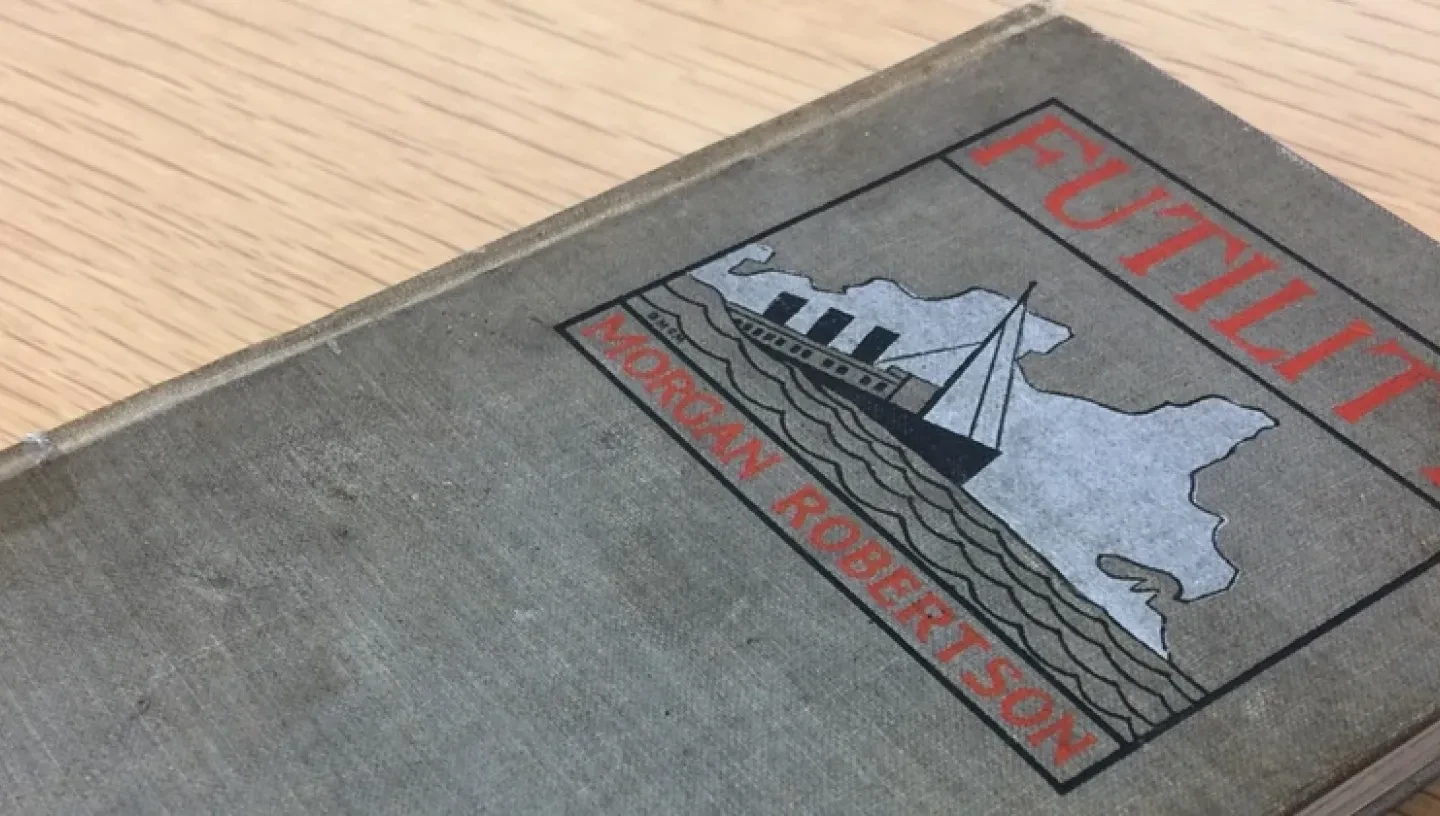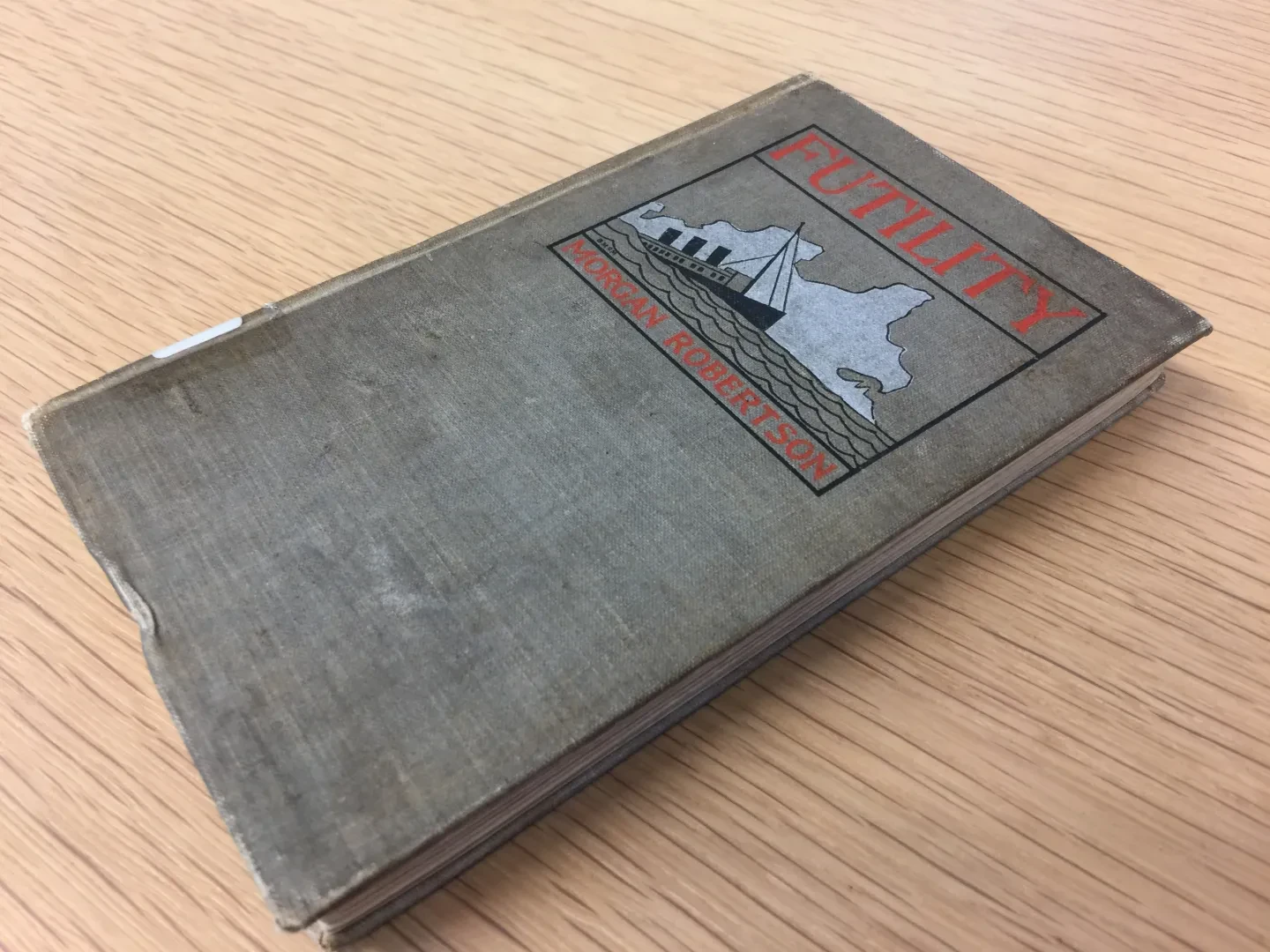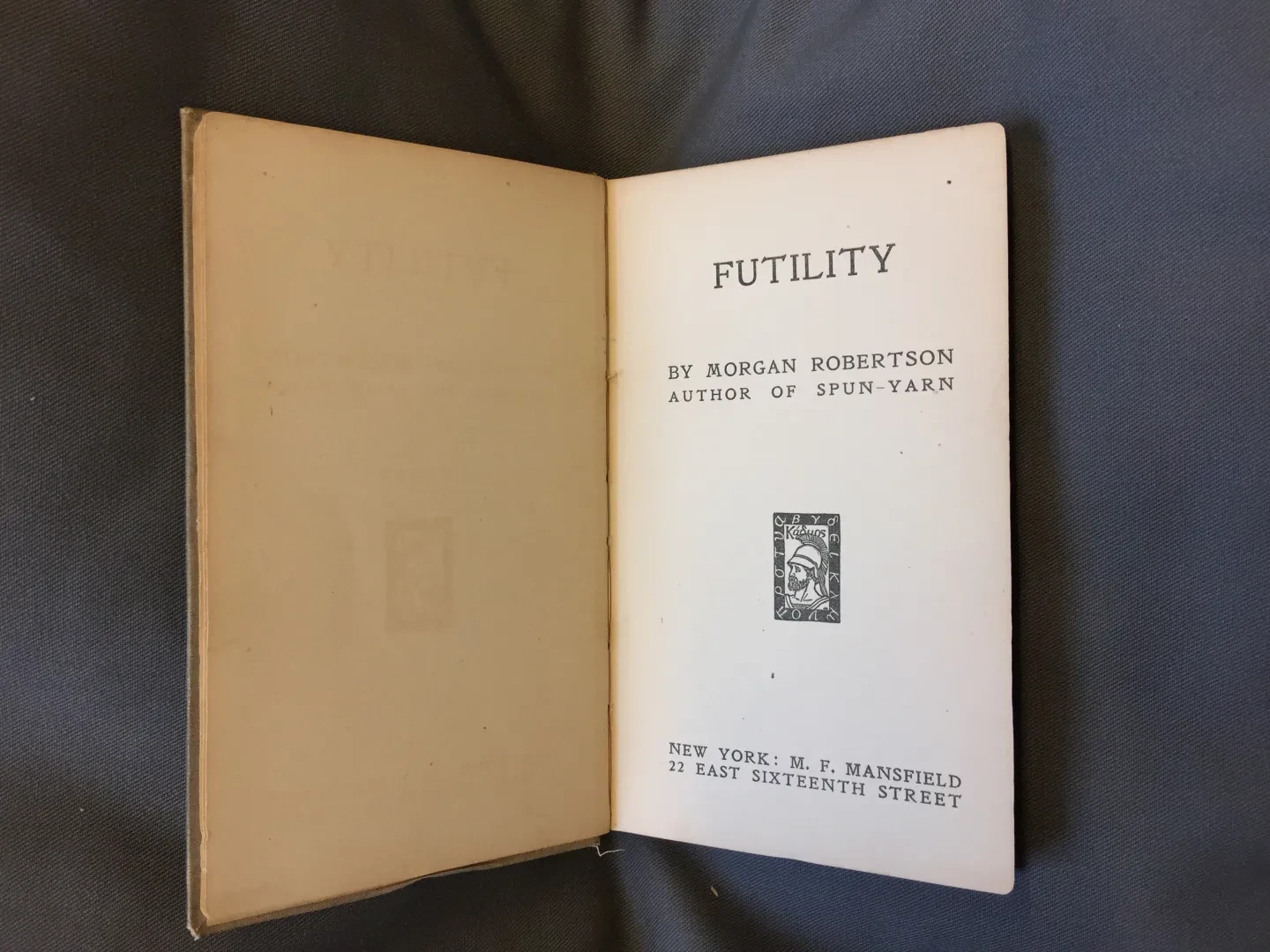
October's Item of the Month looks at a prescient work of fiction from 1898, Morgan Robertson's Futility.
“She was the largest craft afloat and the greatest of the works of men. In her construction and maintenance were involved every science, profession, and trade known to civilisation. On her bridge were officers, who, besides being the pick of the Royal Navy, had passed rigid examinations in all studies … they were not only seamen, but scientists.
Unsinkable – indestructible, she carried as few [life] boats as would satisfy the laws.
In view of her absolute superiority to other craft … she would steam at full speed in fog, storm, and sunshine, and on the Northern Lane Route, winter and summer…”
You may be forgiven for thinking you know the ship being described above. However, it is not the Titanic. This is, in fact a description of the fictional steamship Titan from the 1898 novella, Futility.
Beyond the prophetic naming of the Titan, author Morgan Robertson also accurately predicted the largest vessel afloat, carrying the minimum number of lifeboats required under the current regulations, and able to travel as swiftly as any ship in service.
With all these similarities, it may not come as a shock that the Titan also has a fatal encounter with an iceberg, claiming the lives of nearly all of the 3,000 on-board.

The central character of the story is a troubled member of the Titan’s crew, a lookout who is caught up in an on-board conspiracy after the Titan runs down and destroys a smaller sailing vessel. The lookout later survives the Titan’s own demise and lands on the iceberg together with a small girl. A dramatic encounter with a ferocious polar bear on the surface of the iceberg gives him an opportunity for some heroism and the chance to care for the child, who turns out to be the daughter of a love interest who had previously spurned his advances.
Whilst the melodrama found in the personal relationships of the protagonist may not be the stuff of a literary classic, Futility remains a fascinating piece as it begs the question: how was Morgan Robertson so able to predict a disaster that would not happen for another 14 years with so much apparent accuracy?

In Alexander C. Brown’s article “The Titan and the Titanic: 1898 novel predicted 1912 disaster but no one listened!” (Daily Press New Dominion, September 24, 1972) gives some brief biographical detail of Robertson, who was born in 1861 and spent a decade of his life at sea in a variety of American registered ocean-going vessels. After this, he pursued a career as an author, writing a number of maritime titles.
With his first-hand experience of life at sea, it is likely that Robertson had an interest in maritime developments and technology. The race between the great powers to build larger, faster and more luxurious liners to compete on the profitable North Atlantic route would have been the cutting edge of technology and subject to public interest. As with some of today’s disaster movies, Robertson was able to fashion a plausible catastrophe to form part of his narrative.
The Caird Library’s collection also contains an example of the 1912 re-print of the novel, retitled as The Wreck of the Titan or, Futility. The horrifying parallels of the fiction to the actual events of 15 April 1912 saw the resulting re-print gaining a wider circulation than the first edition.
Morgan Robertson is reported to have died in 1915, three years after the loss of the Titanic. Quite how he must have reacted to the disaster so closely resembling his work of fiction is unknown.
The Caird Library has a wide range of printed material relating to the loss of the Titanic. A helpful overview of the collections can be found in our online research guide.
Gareth Bellis, Archive and Library Manager